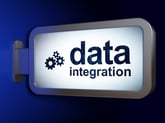 Having your HRMS and ERP data "integrated" (meaning updates in one system seamlessly flow through to the other) provides two distinct advantages. The first is that your enterprise has reduced its cost in the form of saved time and fewer errors. The second advantage is you can more readily draw actionable insights about your employees because the reporting that contains these insights doesn't have to be aggregated and combined in a patchwork of excel files or separate databases. In this blog post, we'll briefly describe these items and reveal some surprising insights.
Having your HRMS and ERP data "integrated" (meaning updates in one system seamlessly flow through to the other) provides two distinct advantages. The first is that your enterprise has reduced its cost in the form of saved time and fewer errors. The second advantage is you can more readily draw actionable insights about your employees because the reporting that contains these insights doesn't have to be aggregated and combined in a patchwork of excel files or separate databases. In this blog post, we'll briefly describe these items and reveal some surprising insights.
Let's start with saved time/fewer errors - which are two sides of a familiar coin to most people: reduced expenses. We don't have to spend a lot of time on this because everyone is long familiar with it. If you've previously implemented an ERP system and/or a human capital management tool, such as an HRMS, or use a best-in-class administrator with a cloud-based system, you've already done some kind of return on investment calculation and are at least partially committed to the idea that entering records twice, in two different systems, takes more than twice as long as entering them only once. The time spent and likelihood of errors increases with the number of times you have to enter each record...again, not all that surprising. What may be a surprising to know is that the increase in errors and time spent is not arithmetic, it's geometric, which is to say: if you have to enter data into three systems, you'll have twice as many errors, as if you only had two systems. If you a particular set of records has to be entered four times, you'll have spent 4X as much time and have 4X as many errors. Suffice it to say, the fewer systems you have to enter information, the better. Most organizations in the less than 2,000 EE range haven't purchased a single, purpose built, enterprise-wide system to manage all of their data. These tools are wickedly expensive. It's quite normal for employee and cost data to reside in more than 4 systems - some organizations have a dozen or more.
Some examples for a typical SMB (small to mid-sized business) could be an accounting system, payroll system, time & labor management system, health insurance carrier/TPA, leave management system (if not managed in Excel or by hand), and CRM. Other personnel related costs such as Worker's Compensation, disability, travel & entertainment and workplace safety could reside in their own systems, with a vendor, or in spreadsheets. Having a cost effective, cloud-based ERP and integrated HRMS solution eliminates one, and if done right, multiples of these systems, and because people are so used to dealing with so much manual data manipulation/entry into multiple systems, they have a limited frame of reference and don't know how much time and money their organization can save be riding that geometric curve backward. The second surprising and potential insightful thing (well, it was for me at least), is that cloud-based systems that integrate well with each other (a fancy way of saying they talk to each other well) are relatively recent phenomenon in the SMB world. There is a whole world of your competitors that don't realize how much time they can get back by having the right ERP/HRMS integrated solution. If you can do 10% better than your competitors with this low-hanging fruit, you can build a competitive lead in a short time that will be very hard to overcome.
The second, and frankly more exciting advantage has to do with what you can do if all your employee and cost data can be pulled from one place. We are in the infancy of the "big data analytics" movement, and despite the buzzwords associated with this, the very large enterprises have gotten a head start and are beginning to successfully mine their own data and draw insights about their work-forces not previously known. What they are getting good at is teasing out patterns that identify less-productive and simultaneously more expensive employees through a statistical method called "regression analysis." The first surprise is that the most productive employees are usually the cheapest - not necessarily in salary, but in total employee cost - which many people mistakenly attribute by assigning salary as a proxy. Other factors include cost of benefits, absenteeism, productivity, attitude/culture, workers compensation, disability, etc. Conversely, the most expensive employees generally represent a small minority of the total employee population - they may make up 5% of less - yet they make up 80% or more of an employer's total expenses! Basic HR data such as compensation and medical premiums won't tell you who these folks are. Larger enterprises are getting better and better at identifying and sloughing off their most expensive/least productive folks - and these folks will come knocking on your door. What does this have to do with an integrated ERP/HRMS solution? The SMB employers who have a head-start on integrating their systems can get smarter about their employee data, which means being smarter about their talent pools. As 10,000 baby boomers retire each day and demographic realities usher in projected multi-decade talent shortage, SMBs will be competing with everyone for talent.
Guest blog by Bart McCollum, President and COO of Ameriflex.
By Brian Terrell of BTerrell Group, LLP, Intacct and Sage ERP & CRM provider based in Dallas.


